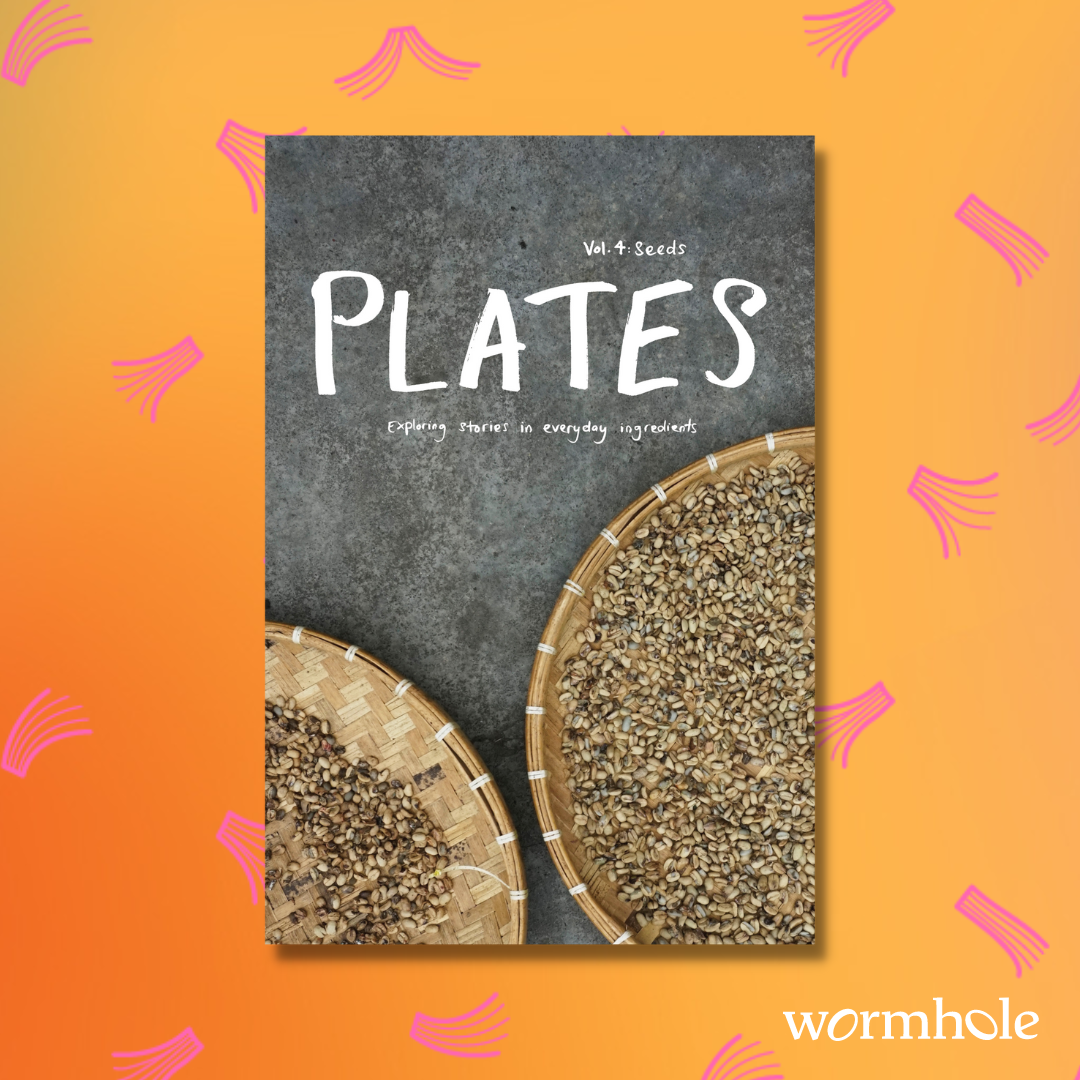Plates
Plates Magazine
Couldn't load pickup availability
An independent food magazine that explores overlooked and underreported stories, serving up an alternative to Eurocentric narratives in food writing
---
Volume 1: RICE
This maiden issue is dedicated to the humble, and often overlooked, rice grain that remains a staple in Asian diets. Plates travels to different corners of Malaysia to speak to people about their unconventional relationship with rice and the risk that comes with it.
Among them: an indigenous Kadazan-Dusun high priestess whose occupation is bound to disappear in the coming generation; an organic farming activist who fearlessly challenges the government-imposed status quo; and social entrepreneurs who have forgone dollars and sense to fully invest themselves emotionally and financially in a group of marginalised rice farmers in rural Borneo.
On the cover, a handcrafted glutinous rice dumpling based on a recipe that has been passed down and altered over generations; inside, a step-by-step pictorial. For home bartenders, find out more about an under-celebrated hyperlocal spirit, a Bornean rice wine, and learn how to make it at home the traditional way.
Volume 2: DURIAN
In this issue: microaggressions in food writing and durian, a fruit globally misunderstood; we seek out a splintered folklore in Borneo and experience the complexities, legalities and dreams of an indigenous group’s land struggle in Malaysia; we experiment and concoct durian dishes and drinks; and learn the history behind Thai durian names and what Shanghai millennials really think of the “Hermès” of durians.
Have you ever wondered why European blue cheeses, arguably as divisive as the notorious Southeast Asian durian, is rarely vilified in food writing? This King of Fruits holds memories for many Southeast Asians; from the Kayan people of Borneo to the indigenous Semai ethnic group of Peninsular Malaysia. Indigenous folklore tales tell of the significance of the durian in cultures and histories.
From thousand-dollar Thai durians and the history behind their names to Malaysia’s unicorn species, Musang King. Also known as mao shang wang, this durian is said to lure growing Chinese consumers away from Thai durians. Plates' second edition takes a look at the global durian consumption and speaks to the everyday people who are betting on a fruitful prediction. Plus, recipes for durian-infused cocktails, stir-friend durians, and a homemade fruit spread.
Volume 3: WATER
In this issue, we are guided towards geopolitical themes — a school by the sea — where its students are recognised by no nation; a story of resilience and hope, and a group of millennials doing what their foregenerations told them not to–to talk to strangers, and to share one’s privilege.
This issue also explores the spiritual importance of water in Bidayuh culture as well as documented by cultural anthropologist and visual artist, Kendy Mitot. Meanwhile, resident drinks contributor, Ashwin Retnakumar distils the term ‘Water of Life’ and its ever present role in the production of alcohol. New to the Plates family, indigenous rights advocacy trainer and Bertha Fellow, Puah Sze Ning, brings her observations from the field of nearly two decades, to untap the meaning of water for indigenous communities across Malaysia in a photo essay, where too much or too little can literally mean life or death.
Despite seemingly dark feature titles, the Water issue is not all doom and gloom, but one of hope and possibility. It is an invitation to reflect on our existing preconceptions and relationships with the overlooked resource.
Volume 4: SEEDS
This issue hopes to inspire you to not only think about the seeds that you choose to plant and consume, but notice how we carry and spread the seeds in the little things we do.
Original features include: ‘A Living Seed Bank’, the observations and ad hoc operations of the makings of an ex situ seed bank in Kampung Cempedak ‘Cempedak Village’, Kuang, Malaysia while seeking answers to “Why bother planting something we can’t eat?” ‘Orange Was the New Black’, a story set across several villages in Karo, North Sumatra, Indonesia, about a resilient seed and the people intertwined with it.
‘Nature’s Perfect Bead’, a photo essay about the sacred and aesthetic uses of Job’s tears, by documentarian and Bertha Fellow, Puah Sze Ning. ‘From Ground to Plate: It’s Not that Simple’ an unconventional story about quinoa, a story collected from its location of origin in Luquina Chico, Peru, by Fiona Cheung. And more, including recipes for Nutmeg Fruit Syrup; Fennel Bee’s Knees and Cardamom Espresso Martini.








